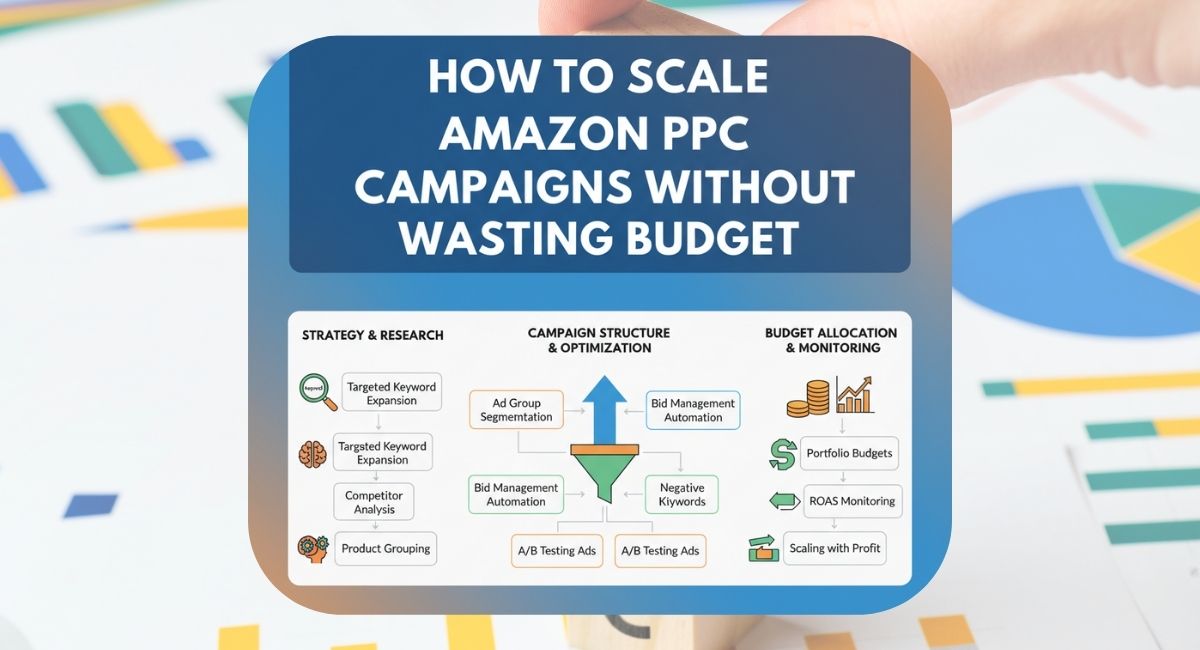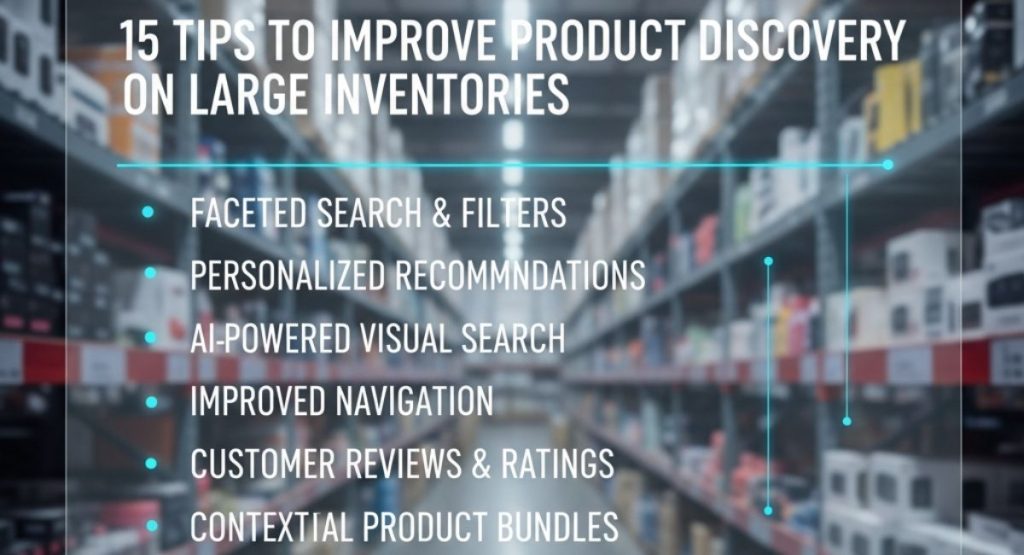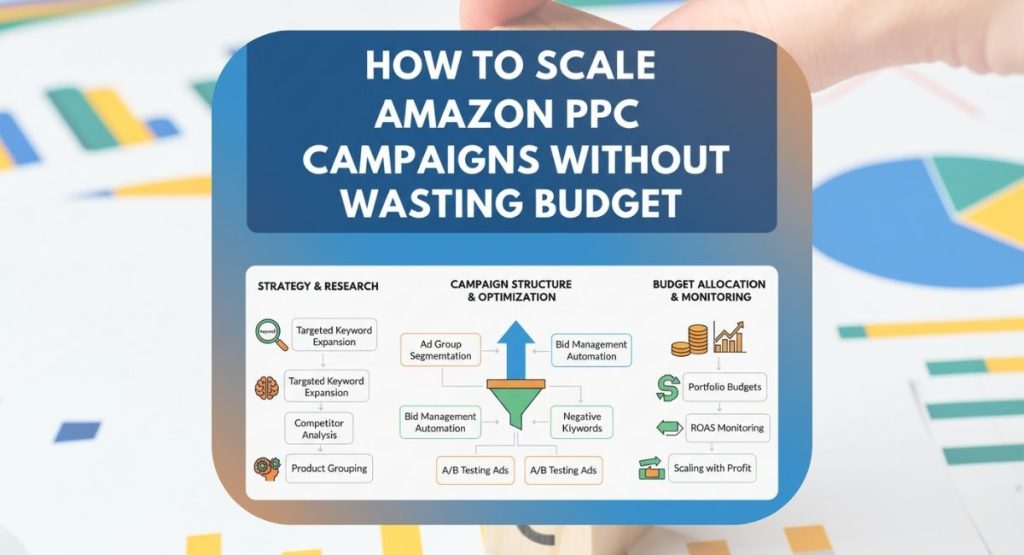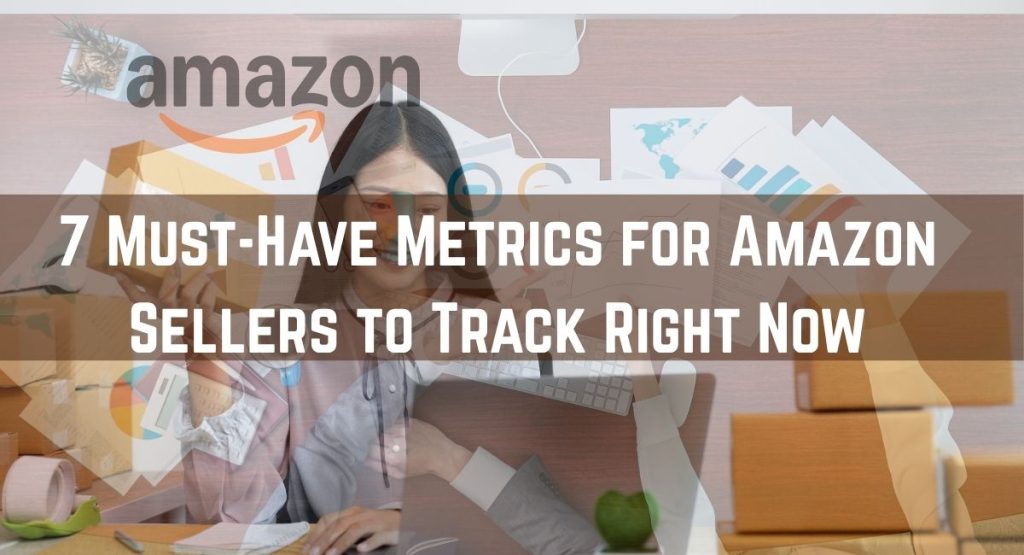Scaling Amazon PPC (Pay-Per-Click) campaigns is one of the most rewarding yet challenging parts of growing your eCommerce business. Many sellers hit a wall after seeing early success, unsure how to maintain profitability while increasing ad spend. The truth is, scaling isn’t just about spending more. It’s about learning how to optimize Amazon ads, use data-driven decisions, and control waste from irrelevant clicks or poorly targeted campaigns.
Before you start scaling, make sure your Amazon product listings are fully optimized with strong keywords, high-quality images, and persuasive descriptions. If you’re not confident about this part, check out how our Amazon product listing services can help improve conversion-ready listings that support your PPC growth strategy.
This guide breaks down practical steps, strategies, and insights to scale your Amazon PPC efficiently — without losing control of your budget.
Understanding the Foundation of Scaling Amazon PPC
Scaling doesn’t mean simply doubling your budget or launching dozens of new campaigns. It’s about increasing your ad spend strategically while maintaining or improving your Return on Ad Spend (ROAS).
You need to build a system that collects data, refines targeting, and identifies profitable keywords. Once your campaigns generate steady sales with a manageable ACoS (Advertising Cost of Sale), you can start scaling with confidence.
Here’s what scaling usually looks like in practical stages:
| Stage | Focus Area | Goal |
| Initial Optimization | Improve CTR, refine keywords | Get data and reduce wasted spend |
| Controlled Growth | Add budgets gradually | Maintain stable ACoS |
| Expansion Phase | Explore new keywords and match types | Increase visibility without lowering ROI |
| Automation & Refinement | Use tools and data-driven optimization | Sustain long-term scalability |
Each stage requires careful tracking and testing. Skipping one can lead to overspending or poor performance.
Step 1: Analyze Campaign Data Before Scaling
Build a Clear Data Foundation
Before increasing your ad spend, you need a full understanding of what’s working. This isn’t just about checking ACoS; it’s about analyzing how your campaigns generate revenue and profit. Collect campaign data from the last 30–90 days for better trend accuracy.
Key Performance Metrics to Evaluate
- ACoS (Advertising Cost of Sale): The percentage of ad spend relative to attributed sales. Compare this against your profit margins.
- TACoS (Total Advertising Cost of Sale): Evaluates how ads affect your total sales, including organic. Rising TACoS with falling organic sales signals overdependence on ads.
- CTR (Click-Through Rate): Reveals how appealing your ads are to shoppers. A low CTR may indicate weak visuals or irrelevant targeting.
- Conversion Rate: Shows how effectively your product page converts clicks into sales.
- ROAS (Return on Ad Spend): Revenue earned per dollar spent on ads.
- Search Term Profitability: Identifies keywords that bring profitable conversions.
Practical Analysis Steps
- Segment campaigns by match type, product, and keyword.
- Identify the top 20% of campaigns driving 80% of your profit.
- Pause or restructure poor performers before scaling.
- Run placement analysis (Top of Search vs. Product Pages).
- Evaluate attribution time windows to understand delayed conversions.
Prioritization Table
| Metric | Action if High | Action if Low |
| ACoS | Reduce bids or pause | Increase bids carefully |
| CTR | Test images and titles | Reevaluate targeting |
| TACoS | Optimize listings | Review ad reliance |
| Conversion Rate | Scale campaign | Fix listing and copy |
Pro Tip: Partnering with Maxim Blu’s Amazon PPC management services can help identify profitable campaigns through in-depth data reports and AI-based insights.
Step 2: Gradual Budget Increase Strategy
Scale Slowly for Stability
Increasing budgets too quickly disrupts Amazon’s learning phase and leads to wasted ad spend. A gradual approach helps maintain profitability while gathering reliable data.
Rules for Smart Budget Increases
- 10–20% Weekly Increase: Small, steady adjustments prevent performance spikes.
- Performance Gate Rule: Scale only campaigns meeting target ACoS and conversion thresholds.
- Cap Rule: Set maximum spend limits per campaign.
- Reevaluation Cycle: Review results every 48 hours and again after seven days.
Weekly Scaling Timeline
- Week 0: Select 2–3 test campaigns.
- Week 1: Increase budgets by 10%.
- Week 2: Reassess and increase another 10% if results hold.
- Week 3+: Continue incremental increases based on results.
Avoid Overspending While Scaling
- Monitor inventory closely to prevent ads on out-of-stock products.
- Pause keywords that consume budget without converting.
- Use placement bid modifiers carefully.
- Add negative keywords regularly to filter poor traffic.
Micro-Testing Ideas
- Test budget increases on exact match campaigns first.
- Compare two campaigns at different budget levels to analyze cost-per-click and ROAS changes.
Step 3: Optimize Amazon Ads with Better Keyword Management
Why Keyword Management Drives Scaling
Strong keyword management is the backbone of efficient scaling. As budgets rise, irrelevant traffic increases unless your keyword control improves.
Three-Tiered Keyword Optimization Approach
1. Keyword Harvesting:
- Analyze search term reports weekly.
- Promote converting search terms to exact match.
- Identify long-tail keywords with lower CPCs.
2. Negative Keyword Strategy:
- Block irrelevant or low-performing terms.
- Maintain a list of added negatives with reasons for easy management.
- Focus on terms that drain budget, like generic words or unrelated products.
3. Bid Optimization:
- Classify keywords into three tiers:
- Tier A: High-profit drivers (increase bids moderately).
- Tier B: Stable converters (keep steady).
- Tier C: Poor performers (lower bids or pause).
Advanced Keyword Tactics
- Implement keyword sculpting to avoid overlap.
- Use Amazon’s “Search Term Impression Share” to track competitive position.
- Combine internal site data with Amazon search reports for hidden opportunities.
For an advanced walkthrough, read AI-driven keyword research hacks to identify profitable, low-competition terms faster.
Step 4: Refine Campaign Structure
Why Structure Matters
A clear structure keeps campaigns organized as they scale, prevents budget overlap, and simplifies performance tracking.
Recommended Structure Strategy
- Segment by Match Type: Separate broad, phrase, and exact campaigns.
- Group by Product Line or ASIN: Each product should have its own campaign for better tracking.
- Isolate Top Performers: Move high-performing keywords into separate campaigns.
- Test Placement Adjustments: Use top-of-search boosts only for proven converting keywords.
Campaign Naming and Tracking
Use clear, consistent naming conventions like:
Brand_Product_Exact_Q4_Scaling
Tag campaigns by status (Testing, Scaling, Paused) for faster management.
When to Split or Merge Campaigns
- Split: When a keyword or ASIN performs significantly better.
- Merge: When multiple campaigns share near-identical performance data.
A well-structured campaign layout improves efficiency and clarity for long-term scaling.
Step 5: Explore Campaign Expansion Opportunities
Beyond Basic Sponsored Products
Once your core campaigns are steady, it’s time to expand into new formats and markets.
Expansion Channels to Explore
- Sponsored Brands: Boost brand visibility with headline and video ads.
- Sponsored Display: Retarget shoppers who visited your listing.
- Video Ads: Demonstrate product benefits in short clips.
- Category Targeting: Appear on competitor listings within your category.
- International Expansion: Sell in global marketplaces with localized listings.
Testing and Validation
- Assign a small test budget to each new campaign type.
- Measure incremental ROAS over 14–30 days.
- Avoid scaling all at once—test one new format at a time.
For larger-scale expansion, explore Amazon eCommerce solutions by Maxim Blu to develop structured, data-led scaling systems.
Step 6: Utilize Automation and Data Tools
Using Automation Wisely
Automation simplifies repetitive PPC tasks but should enhance—not replace—manual analysis.
Automation Applications
- Bid Management: Use automated bid rules with defined min/max caps.
- Dayparting: Schedule ads during peak hours for your category.
- Bulk Operations: Manage campaigns and ad groups faster.
- Performance Alerts: Set up alerts for CPC spikes or CTR drops.
Choosing the Right Tools
- Prefer platforms with manual override controls.
- Ensure integration with Amazon’s API for real-time updates.
- Track all automated changes in an activity log.
What Automation Can’t Replace
- Strategic campaign design.
- Human judgment in interpreting creative or listing issues.
- Forecasting inventory and seasonal shifts.
Automation should free your time for analysis, not make your account hands-off.
Step 7: Focus on Profitability, Not Just Growth
Why Profit Comes Before Scale
Revenue growth without margin control leads to cash flow strain. Scaling PPC should always align with sustainable profit.
Key Profitability Metrics
| Metric | Ideal Range | Next Action |
| ACoS | 15–30% | Adjust bids if above break-even |
| TACoS | 7–15% | Evaluate organic growth impact |
| Conversion Rate | 10%+ | Improve listings or pricing |
| Profit per Unit | Positive | Continue scaling |
Strategies to Maintain Profitability
- Use profit-based bid adjustments.
- Focus incremental budget on high-profit keywords.
- Watch for cannibalization—ads should not replace organic sales.
- Include customer lifetime value (CLV) when calculating long-term ROI.
Scaling should amplify profit, not just exposure.
Step 8: Strengthen Product Listings and Storefront
Conversion-Driven Listing Optimization
Ad performance directly depends on listing quality. A strong listing ensures every click has a chance to convert.
Optimization Checklist
- Title: Use primary keywords early while keeping titles natural.
- Images: Include lifestyle shots and infographics.
- Bullets and Description: Communicate benefits clearly.
- Backend Keywords: Add relevant hidden search terms.
- Reviews: Encourage verified feedback and respond to questions.
Storefront and Brand Experience
Ensure your Amazon Store reflects brand consistency. Keep messaging uniform between ad creatives and product detail pages.
Consider improving your storefront with eCommerce web development to boost buyer trust and streamline navigation.
Step 9: Use Seasonality and Trends to Your Advantage
Plan Ahead for Demand Surges
Amazon traffic spikes during events like Prime Day or holidays. Strategic timing helps you scale when conversions are highest.
Seasonal Scaling Strategy
- Prepare inventory 60 days ahead of major events.
- Increase budgets 2–3 weeks before the peak.
- Refresh creatives with holiday or event-specific visuals.
- Taper budgets slowly post-season to maintain visibility.
Trend Analysis and Forecasting
- Use Amazon Brand Analytics and Google Trends to detect emerging keywords.
- Watch competitor patterns and CPC movements.
- Run small discovery campaigns for trending keywords before major competitors catch on.
Seasonality planning ensures your scaling strategy aligns with real consumer behavior.
Step 10: Continuous Optimization and Testing
The Habit of Ongoing Improvement
Amazon PPC optimization never ends. Constant testing keeps your campaigns efficient and competitive.
Testing Framework
- Define your hypothesis and success metrics.
- Test one variable at a time (e.g., headline or bid strategy).
- Run experiments for 14–30 days with sufficient data.
- Document all results for future learning.
Testing Ideas
- Test ad copy variations.
- Compare bid strategies (fixed vs. dynamic).
- Try different placements.
- Adjust negative keyword lists and measure changes.
Institutionalizing Optimization
- Maintain a shared test log.
- Review performance quarterly for key takeaways.
- Host team discussions around data-driven results.
Optimization is not a phase—it’s an ongoing discipline that drives continuous improvement.
FAQs About Scaling Amazon PPC Campaigns
1. How long does it take to scale an Amazon PPC campaign efficiently?
It usually takes 30–90 days to scale properly, depending on your category, competition, and product demand. Gradual increases and data tracking ensure steady growth without waste.
2. What is the ideal ACoS target while scaling?
A healthy ACoS depends on your profit margin. Many sellers aim for 20–30%, but this can vary. Focus more on maintaining profitability than chasing a fixed percentage.
3. Should I use automatic campaigns when scaling?
Automatic campaigns are great for keyword discovery, but manual campaigns give more control. Use automatic ones as a supplement to gather new data.
4. How can I reduce wasted spend during scaling?
Implement negative keywords, pause underperforming ads, and ensure your listings are optimized for conversions. Proper amazon ad budget allocation ensures every click has potential to convert.
5. Is scaling PPC suitable for new sellers?
Yes, but only after your product has strong reviews, competitive pricing, and an optimized listing. Scaling too early can lead to unnecessary costs.
6. Should I focus on TACoS or ACoS?
Both matter, but TACoS gives a better picture of your overall business health. It includes organic sales influenced by your ads, not just direct ad conversions.
7. Are third-party tools worth it for Amazon PPC management?
They can be, especially when combined with expert insight. Partnering with specialists like our Amazon PPC management team helps you use data and automation effectively without overspending.
Final Thoughts
Scaling Amazon PPC campaigns without wasting budget requires patience, structure, and data-driven strategy. It’s not just about raising ad spend but about refining your campaigns to deliver consistent profitability. With proper keyword management, negative keyword application, and smart budget allocation, you can expand visibility while controlling costs.
As competition on Amazon continues to grow, investing in professional paid marketing or Amazon eCommerce solutions from a reliable partner like Maxim Blu can make a significant difference. Their team helps businesses scale Amazon PPC efficiently, refine ad strategy, and build optimized eCommerce systems that sustain long-term profitability.
When done right, scaling your Amazon PPC campaigns can transform your store from steady sales to sustainable growth—without wasting a single dollar.





